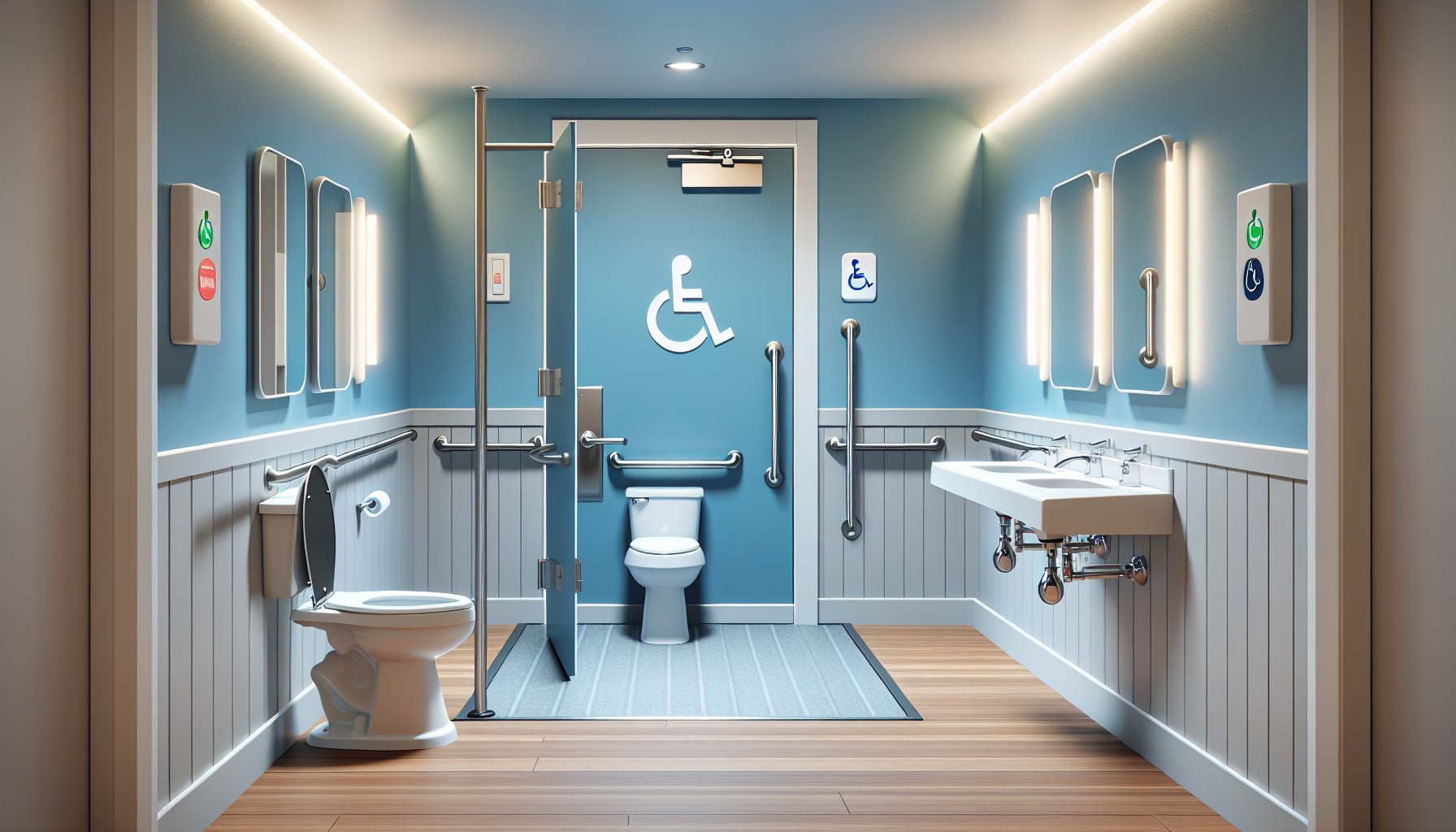A Practical Guide to the American with Disabilities Act
Guidelines

Imagine navigating a world where doors are permanently locked, information is perpetually out of reach, and opportunities are systematically denied. For millions of Americans with disabilities, this was the stark reality before the passage of the Americans with Disabilities Act (ADA) in 1990. This landmark civil rights law was designed to dismantle these barriers, and its practical application is defined by a critical set of rules: the American with Disabilities Act guidelines. These guidelines serve as the technical blueprint for creating a more inclusive and accessible society, ensuring that the promise of the ADA is realized in our everyday built environment, communications, and services. Understanding these American with Disabilities Act guidelines is not just a legal obligation for businesses and public entities; it is a fundamental step toward fostering true equity and inclusion.
Understanding the ADA and Its Core Requirements

The ADA is divided into five titles, each addressing a key area of public life. The American with Disabilities Act guidelines provide the detailed specifications for compliance under these titles. The core legal requirements you need to understand are:
Title I - Employment: This prohibits private employers, state and local governments, employment agencies, and labor unions from discriminating against qualified individuals with disabilities. This covers all employment practices, including job application procedures, hiring, firing, advancement, compensation, and training. Reasonable accommodation is a cornerstone of Title I, requiring employers to provide modifications or adjustments that enable an employee with a disability to perform essential job functions, unless it causes "undue hardship."
Title II - Public Services (State and Local Government): This title requires that all state and local government services, programs, and activities are accessible. This extends to public transportation, public schools, courthouses, and town halls. It mandates that governments communicate effectively with people who have hearing, vision, or speech disabilities and make reasonable modifications to policies and procedures to avoid discrimination.
Title III - Public Accommodations and Services Operated by Private Entities: This is the title that most directly affects businesses open to the public. It requires that places of "public accommodation" (e.g., restaurants, hotels, retail stores, theaters, doctors' offices, parks) be accessible. The American with Disabilities Act guidelines under Title III are incredibly detailed, covering everything from the slope of a ramp and the width of doorways to the height of service counters and the configuration of restroom stalls.
Title IV - Telecommunications: This title requires telephone and Internet companies to provide a nationwide system of interstate and intrastate telecommunications relay services that allow individuals with hearing or speech disabilities to communicate over the telephone. It also mandates closed captioning of federally funded public service announcements.
The key to navigating these titles is the concept of "reasonable accommodation" (in employment) and "reasonable modifications" (in services). This means removing barriers where it is readily achievable for existing buildings and ensuring new construction and alterations are fully compliant with the latest American with Disabilities Act guidelines.
The Blueprint for Access: What the ADAAG Covers

The technical specifications for Titles II and III are primarily found in the ADA Accessibility Guidelines (ADAAG), developed by the U.S. Access Board. These American with Disabilities Act guidelines are the definitive source for measurable standards. They cover a vast range of elements, including:
Accessible Routes: Providing continuous, unobstructed paths connecting accessible elements and spaces, both inside and outside a building.
Doors and Doorways: Ensuring proper clear width, maneuvering clearance, and hardware that is easy to grasp and operate with one hand.
Ramps and Curb Ramps: Dictating the maximum slope, required landings, and handrail specifications.
Parking and Passenger Loading Zones: Specifying the number, size, and location of accessible parking spaces, including van-accessible spaces with proper access aisles and signage.
Restrooms and Plumbing Elements: Providing detailed requirements for toilet stall size, grab bar placement, sink height and clearance, and accessible faucets.
Communication Features: Including standards for visual alarms, signage with Braille and raised characters, and assistive listening systems.
Adherence to these specific American with Disabilities Act guidelines is the most reliable way to ensure compliance and avoid creating new barriers. The 2010 ADA Standards for Accessible Design is the current enforceable standard, which updated and merged the previous guidelines for Titles II and III.
The High Cost of Non-Compliance: Legal and Financial
Ramifications

Failing to comply with the ADA and its accompanying American with Disabilities Act guidelines is not a minor oversight; it carries significant legal and financial consequences. The ramifications for non-compliance are severe and multifaceted.
Lawsuits and Litigation: Individuals who encounter access barriers can file private lawsuits against a business or public entity. These lawsuits can seek court orders to force compliance (injunctive relief) and award monetary damages for discrimination. "Drive-by" lawsuits, where plaintiffs (sometimes serially) seek out technical violations, have become a notable issue, particularly for small businesses.
Government Enforcement: The U.S. Department of Justice (DOJ) is authorized to investigate complaints and bring civil actions against entities violating Titles II and III. In cases of widespread discrimination, the DOJ can seek significant monetary penalties. For a first violation under Title III, civil penalties can reach up to $75,000; for subsequent violations, the penalty increases to $150,000.
Reputational Damage: Beyond the courtroom, the public relations fallout from an ADA lawsuit can be devastating. Being labeled as non-inclusive or discriminatory can alienate customers, damage brand reputation, and erode community trust. In today’s socially conscious climate, a commitment to accessibility is a powerful positive signal.
Lost Revenue and Opportunity: By not following the American with Disabilities Act guidelines, you are effectively turning away a massive market segment. Over 61 million adults in the U.S. live with a disability, representing significant disposable income. An inaccessible business misses out on this revenue, as well as the patronage of their families and friends.
Ignoring the American with Disabilities Act guidelines is a risky business strategy that prioritizes short-term savings over long-term stability, inclusivity, and legal safety.
Proactive Steps for Ensuring ADA Compliance

So, what can you do? Compliance is an ongoing process, not a one-time project. Adopting a proactive approach is the best way to mitigate risk and build a truly welcoming environment. Your action plan should include:
Conduct an Accessibility Audit: Hire a Certified Access Specialist (CASp) or a knowledgeable architect to conduct a thorough survey of your facility against the current American with Disabilities Act guidelines. This will provide a clear roadmap of necessary modifications.
Prioritize Barriers: For existing buildings, prioritize removing barriers that are "readily achievable" — easily accomplishable without much difficulty or expense. This could start with adding ramps, repositioning shelves, or installing grab bars.
Train Your Staff: Ensure all employees, especially those in customer-facing roles, understand their responsibilities under the ADA. They should know how to interact courteously with customers with disabilities and understand the process for handling requests for reasonable modifications.
Digital Accessibility: The American with Disabilities Act guidelines also apply to the digital world. Ensure your website and mobile applications are accessible to people with disabilities, conforming to standards like the Web Content Accessibility Guidelines (WCAG). Digital barriers can lead to the same lawsuits as physical ones.
Develop a Transition Plan: For public entities under Title II, a formal transition plan outlining the steps and timeline for achieving program accessibility is required. While not mandated for private businesses, it is a best-practice tool for organized, phased compliance.
A Final Word on the American with Disabilities Act
Guidelines
The American with Disabilities Act guidelines are far more than a legal checklist. They are a reflection of our collective values—a commitment to dignity, independence, and equal opportunity for all. By thoughtfully integrating these standards into your physical spaces, digital presences, and policies, you do more than just avoid lawsuits. You open your doors wider, engage with a broader community, and build a stronger, more inclusive enterprise. Ultimately, complying with the American with Disabilities Act guidelines is not just about following the law; it's about building a better, more accessible world for everyone.